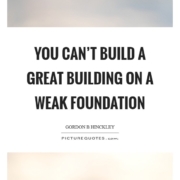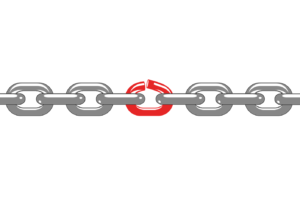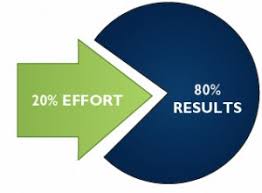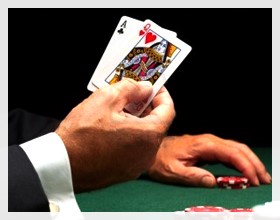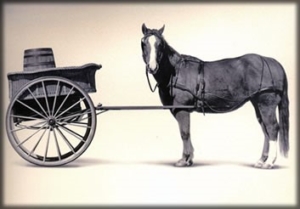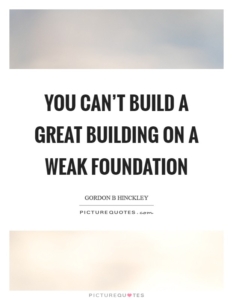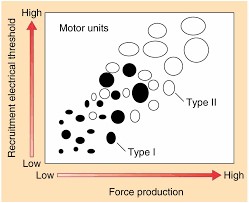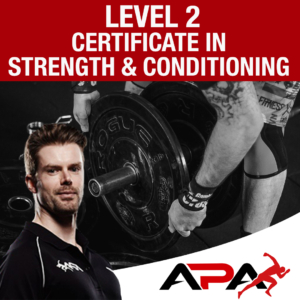5 reasons to do General training
In the last blog we looked at Transfer of Training in Sports and focused on two key aspects- Improved Sports Performance and Achievement of Physical Normalisation. You can also think of this in terms of: motor skills (cognitive) and physical skills (physiological).
I’ve written several blogs on topics related to early specialisation, sports specific training, and the importance of building a volume base
Today I want to share more thoughts on why Physical Normalisation is important, not just for making the body more able to handle the stress of training per se, but actually how to improve sports performance.
Win Now
The need to achieve short term improvements is what I mean by the ‘Win Now.’
A Sports coach (Tennis coach) will obviously want to talk about Sports Performance- how will what we are doing physically with the athlete improve their movement as a tennis player / help them hit the ball harder / last longer NOW! (read that as anything that they can ‘see‘ is helping them win Tennis matches).
I like to view the ‘Sport’ as a Graphic Equaliser- Representative bar chart of the relative contribution of different biomotor abilities during sports performance. A bar at 100% would mean that biomotor ability is taxed maximally.
Each sport will have it’s unique profile, like a display on a graphic equaliser. This is what the Tennis coach sees, They see a specific profile for Tennis. We need to acknowledge the peaks- there are fitness components that are clearly worked closer to a theoretical 100% maximum level, and could be considered ‘specific’ to the sport.
Coaches will have a top down approach- looking first at the components of fitness that seem to be used most in Tennis, and pop up above the average level. Many of the fitness components that are taxed to a great extent are associated with high intensity.
Typically in sport fitness qualities such as agility and reaction speed will be closer to their theoretical 100% level. But you’ll notice that none of them will actually reach 100% because there are so many competing demands on the body.
Importance of High Intensity Training
Let’s be clear, most sports are a high intensity activity. So most coaches therefore associate specific training for sport with high intensity training.
However, assuming high intensity training is important to short term improvements in sports performance- how do you make an important (specific) fitness component better?
In regards to the sports performance I think it is really important to recognise that Sport is not the ‘best’ stimulus for improving Fitness, due to the competing demands placed on the body.
There is no sport that truly ”optimises” any single component of fitness. How many of those bars on the graphic equaliser are at 100%? None right? Therefore in order to reach high enough intensities you may actually have to address certain components separately.
Train in a less specific way to encourage greater overload
Because just playing the sport will only ever keep taxing the body at that same relative level. This is the reason why we shouldn’t just simulate Tennis even when you’re trying to improve qualities that are highly associated with success in Tennis. There are too many competing demands on your body. At some point you will hit a barrier to further gains. In order to bring up your current level you have to train in a less specific way to encourage greater overload. This means breaking the game down into its component parts. So even to maximise short-term gains you still need to train less specifically, by breaking the sport up into its component parts.
Now let’s turn our attention to the need to train more general qualities. These might be movements that don’t look like Tennis. It might also be movements performed at speeds that don’t look like Tennis. These are often the qualities that are thought to build a ‘base’ of fitness. Perhaps the most compelling argument for doing activities that are not specific to a sport to improve sports performance- is to do with the proficiency barrier.
Proficiency Barrier
In the short term performing high intensity activities that replicate the sporting movement will lead to short term improvements in sports performance. But what about the long term?
We really ought to all be developing a general base of physical skills for the reasons everyone has already mentioned a) injury reduction: early burnout, over use and b) proficiency barrier => maximise performance.”
I do believe that the wider and deeper someone’s movement vocabulary is the more easy it will be for the child to acquire the more specific advanced skills of a sport later down the track. Athleticism is developed by practising a range of movement skills to make you more adaptable on the sports field.
I know that muscle pattern overload/over use is extremely likely if you keep hammering away at the same movement patterns inherent in one sport, over and over again. So even if I did believe that the key to getting great in one sport is to just play one sport or replicate the movements exactly (which I don’t), I would enforce that the athlete plays a few other sports and performs slightly different exercises, simply to work the muscles a little differently, and give the overworked ones a rest!
We can discuss the benefits for playing a range of sports in another blog from a motor skills point of view. For now let’s look at some other reasons why doing general physical training will augment sports performance from a physical standpoint:
Win Future
The need to achieve long term improvements is what I mean by the ‘Win Future.’
You ‘cook em slow’ and build them up to more advanced training methods. You wouldn’t expect a child to be grasping complex aspects of University maths and physics. Unfortunately most parents (and coaches) don’t understand principles of sports biomechanics or motor learning!!! They want them to be doing things that look like the sport. However, what most people fail to recognise is that sport is VERY STRESSFUL on the body. We need to prepare the body for the demands of it and that’s why we need to do general work to prepare for the more specific high intensity high speed work that is part and parcel of sport.
Volume base is important for long-term improvement
1. To build up your average level of Fitness
- Only as strong as your weakest link
- The whole is greater than the sum of its parts
My view is that every sport has a minimal level of fitness required- let’s say that’s 50% of the theoretical maximum.
Why would you want to top up a [general quality] that seems to be less important in the chosen sport? For me your long term sustainable performance level will ultimately be limited by your ‘average’ level which includes general fitness. Aristotle’s quote implies that the different biomotor abilities work together in a cooperative effort. Even if agility is considered a high priority and specific to Tennis you can only express it to a certain degree before fatigue kicks in IF you don’t also have a minimum level of aerobic fitness. So the different biomotors are all connected and rely on each other. Make the weaker ones stronger and ‘together everyone achieves more (TEAM).’
I like to believe that a Tennis athlete needs above average physical qualities in all components– even just to be competitive. Think about the definition of an athlete for a moment.
Definition of an athlete- can be described as a person with above average physical qualities. An old Greek word for game is ‘athlos.’ The people who were part of the original Olympic Games were called athletes.
First an athlete, then a specialist
There should be no physical shortcomings or limitations that could impact on sports performance
Do you have the number of basic motor abilities that support an athlete’s functional performance in a sport?
The things that we associate with elite performance such as high speed efforts, explosive serves and ground strokes will all be limited by the extent to which the body can provide a general foundation.
Increased quality of movement ‘in general’ is important for both sports performance and health status, by lowering the risk of injury and improving cognitive function
When an S&C coach looks at the fitness qualities of a sport I feel like we look from the ground up- looking at the graphic equaliser upside down. We see that all fitness components that need to reach a minimum level for the body to be able to meet the demands of sport.
2. Skill acquisition
Lower intensity higher volume work enables high levels of repetition to enhance skill acquisition. This is my strongest case for doing more volume earlier in a training cycle. For me the type of base I need to develop is a movement competency base so I might focus more on higher volume training as a base is because it enables me to get more practice (more reps) in a particular skill.
3. Tissue integrity
- Minimal effective dose
- Pick from the low hanging fruit
- Don’t show your Ace cards too early
4. Phase potentiation
- Size principle
This occurs because all three energy systems “turn on” at the same time, and as each one maxes out, it taps into the next higher bracket for assistance until full recovery can be accomplished. Since the aerobic system serves as the base for substrate recovery and repeated bouts of high output, if inadequacies exist, fatigue will occur faster due to an over reliance on the less-equipped energy brackets to handle restoration, and power output will be compromised.
This same phenomenon exists with muscle recruitment- where all the muscles turn on at the same time but the Type I smaller fibres are preferentially recruited when smaller forces are needed.
5. Force Production
This is kind of related to point 4 but I wanted to hammer the point home.
Parents (and coaches) focus in on the kinematics- they want to see the movements that look like the sport (same acceleration, velocity, position). I get it! But they don’t make the link that it is FORCE PRODUCTION that is the underlying cause of motion. To get more explosive you first need to build a general foundation of strength. The END
.
As Des Ryan said in the forum, ”Tail doesn’t wag the dog!”
Specific training is the ‘realisation’ and expression of those qualities that we need to build in a general sense such as movement efficiency (balance, coordination, mobility/stability, basic strength). We can then apply those physical skills to more high intensity and high speed sports skills. When the kids are young I am comfortable that they get most of their ‘realisation’ opportunities from playing the sport. Let’s work on the foundation in the early years.”
Summary
Developmental athletes are building a movement efficiency base to get good at lifting in later cycles. Strength/Power athletes are building a fatigue base to get a rebound in performance in the next strength cycle. Fat loss clients are building a fat loss base to improve insulin sensitivity and general fitness enthusiasts are building a general base of fitness which doesn’t serve a particular purpose for future cycles.
Where I am next presenting?
Level 2 Certificate in Strength & Conditioning Coaching
Dates: 19/20 Jan and 16/17 Feb 2019, 09:00AM-17:00PM Location: Gosling Sports Park, Welwyn Garden City, AL8 6XE
Book your spot HERE
Hope you have found this article useful.
Remember:
- If you’re not subscribed yet, click here to get free email updates, so we can stay in touch.
- Share this post using the buttons on the top and bottom of the post. As one of this blog’s first readers, I’m not just hoping you’ll tell your friends about it. I’m counting on it.
- Leave a comment, telling me where you’re struggling and how I can help
Since you’re here…
…we have a small favor to ask. APA aim to bring you compelling content from the world of sports science and coaching. We are devoted to making athletes fitter, faster and stronger so they can excel in sport. Please take a moment to share the articles on social media, engage the authors with questions and comments below, and link to articles when appropriate if you have a blog or participate on forums of related topics. — APA TEAM

